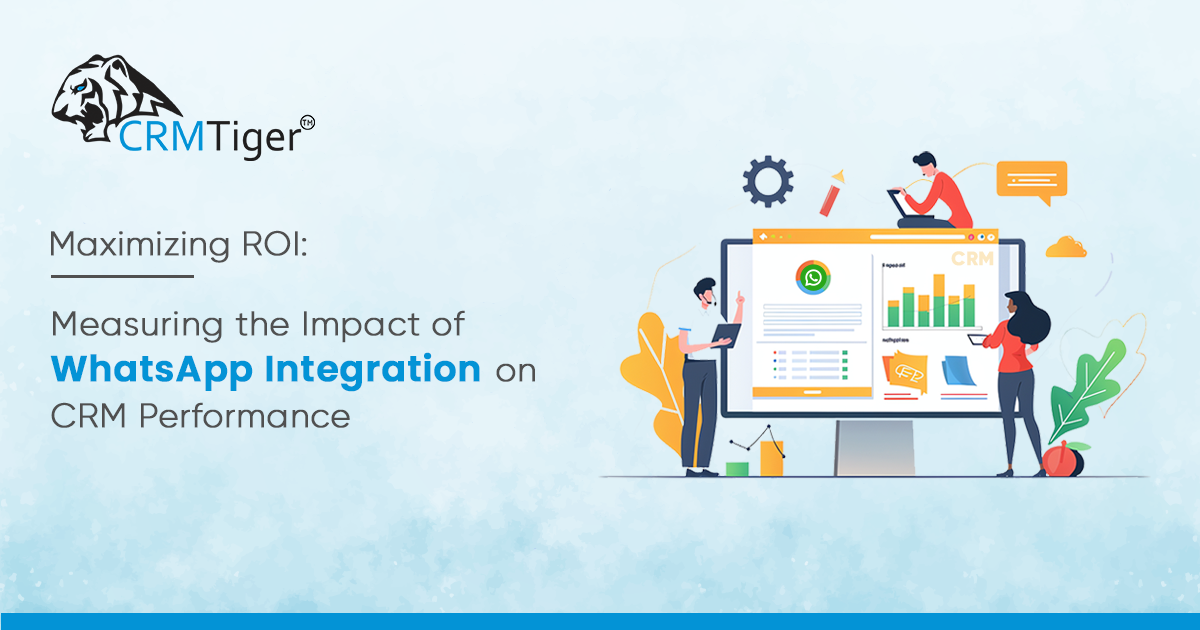
Introduction:
To succeed in today’s fast-paced business world, it’s important to communicate with customers through a chosen channel. With its massive user base and high level of engagement, WhatsApp offers a unique opportunity for businesses to communicate with customers in real time. You can combine WhatsApp with a customer relationship management (CRM) system to greatly improve customer interaction and speed up the process. However, you need to quantify the impact to fully appreciate the benefits. This blog post discusses how to measure the impact of WhatsApp integration on your CRM performance and to get the return on investment.
Why WhatsApp Integration?
- High Engagement: With over 2 billion users, WhatsApp provides direct access to a large audience.
- Real-Time Communication: allowing instant communication and fast response times.
- Personalized Interactions: It enables customized conversations according to customer profiles.
- Improved Efficiency: Simplifies sales and customer support processes.
Measuring the Impact: A Step-by-Step Guide:
1. Define Your Objectives:
Clearly state your goals for WhatsApp integration:
- Enhanced customer service (faster response time, better support)
- Personalizing interactions to increase customer satisfaction and engagement
- Increase revenue by improving conversion rates and streamlining communications
2. Establish Key Performance Indicators (KPIs):
Decide what criteria will be used to measure your success:
- Response Time: Time it usually takes to reply to a WhatsApp message
- Customer Satisfaction (CSAT) Scores: Responses to live chats on WhatsApp
- Conversion Rates: Sales or leads generated by WhatsApp
- Engagement Metrics: Message exchange, frequency, and customer retention
- Resolution Rates: WhatsApp versus other resolution methods
3. Integrate Data Sources:
Combine information from multiple sources to get a complete picture:
- CRM System: WhatsApp-related customer interaction, sales, and support
- Analytics Tools: WhatsApp user activity and engagement (Google Analytics, CRM analytics).
- Customer Feedback: Use surveys and feedback forms to analyze customer satisfaction.
4. Analyze and Compare Performance:
Check out the impact of WhatsApp integration:
- Benchmarking: Compare WhatsApp’s statistics with those of other messaging platforms.
- Trend Analysis: Analyze long-term results to identify areas for improvement.
- ROI Calculation: Weigh the cost of integration against the benefits (more sales, lower costs).
5. Optimize Based on Insights:
Make decisions based on statistics to improve WhatsApp performance:
- Training and Development: Prepare your employees to communicate effectively with WhatsApp.
- Process Improvements: Streamline the business process by automating processes.
- Customer Experience Enhancements: Make connections according to insights.
6. Monitor and Iterate:
Constantly monitor performance, get feedback, and change the way you do it:
- Regular monitoring of KPIs
- Analysis of customer feedback
- Adaptation of strategy in findings
Conclusion:
Integrating your CRM system with WhatsApp can enhance customer communication and make the company successful. You can get the most out of your WhatsApp integration by setting clear goals, managing important performance metrics, auditing statistics, and continuous improvement. Harness the power of WhatsApp and see a huge increase in CRM performance!
Hope you found this blog useful.
We would be happy to assist you.
Please contact us on info@crmtiger.com if you needed further help from us.
Let us know if you need more information on this


Leave a Reply